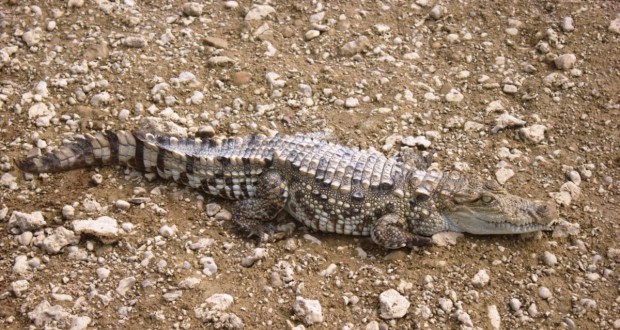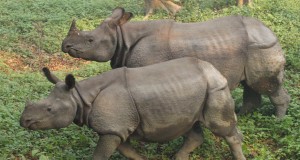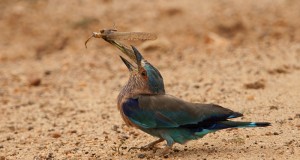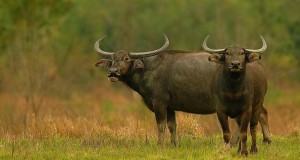UTTAR PRADESH: This huge state ranges from the High Himalaya to the Gangetic Plain. It is densely populated, with a population larger than any country in Europe, but it nevertheless has an important and vast range of wilderness areas. The Himalayan region has many peaks between 21,000 and 26,000 feet (6000-8000 meters) high. The central part is a vast alluvial and extremely fertile plain formed by the Ganga and its major tributaries: the Chambal, the Yamuna, the Ramganga and others. Some of the sanctuaries have been established for specific species such as the gharial, while others are more general, such as Corbett and Dudhwa.
Corbett National Park
Established in 1936 as the Hailey N.P., following the advice of the hunter-naturalist, Jim Corbett. The park in 1986 covered 200 sq miles (520 sq 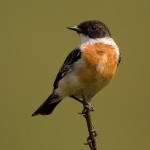 km) and proposed extensions of up to 230 sq miles (600 sq km) are under consideration. The park is set in the undulating Siwalik foothills of the Himalaya with the Ramganga river flowing through it from east to west. The diversity of the wildlife and its location in relation to the major cities of northern India have made it perhaps the most famous park in the region. The many pools of the Ramganga have both mugger and gharial. The river also holds mahseer and other sporting fish. The park is closed during the monsoon, till mid-November. Elephants and vehicles are available at Dhikala. Best time to visit: Feb. —May. Closed from mid-Jun to mid-Nov. Accommodation: forest resthouses at Khinanauli, Sarapduli, Bijrani and Ghairal, bookings can be made through the Project Tiger Office at Ramnagar or in Lucknow (Chief Wildlife Warden). In Dhikala are forest resthouse, loghuts, tourist huts, tented camp. Lodge is being developed at the park entrance which will eventually take over from Dhikala. Permission: Field Director, Project Tiger. Corbett N.P., PO Ramnagar, Dist: Nainital, UP. Cable: PROTIGER, Ramnagar, Tel: Office 189; WL Warden 32. Nearest town & Rail: Ramnagar (12 miles) Air: Phoolbagh (Pantnagar) (32 miles) There is a regular bus service from Delhi and Lucknow to the park entrance.
km) and proposed extensions of up to 230 sq miles (600 sq km) are under consideration. The park is set in the undulating Siwalik foothills of the Himalaya with the Ramganga river flowing through it from east to west. The diversity of the wildlife and its location in relation to the major cities of northern India have made it perhaps the most famous park in the region. The many pools of the Ramganga have both mugger and gharial. The river also holds mahseer and other sporting fish. The park is closed during the monsoon, till mid-November. Elephants and vehicles are available at Dhikala. Best time to visit: Feb. —May. Closed from mid-Jun to mid-Nov. Accommodation: forest resthouses at Khinanauli, Sarapduli, Bijrani and Ghairal, bookings can be made through the Project Tiger Office at Ramnagar or in Lucknow (Chief Wildlife Warden). In Dhikala are forest resthouse, loghuts, tourist huts, tented camp. Lodge is being developed at the park entrance which will eventually take over from Dhikala. Permission: Field Director, Project Tiger. Corbett N.P., PO Ramnagar, Dist: Nainital, UP. Cable: PROTIGER, Ramnagar, Tel: Office 189; WL Warden 32. Nearest town & Rail: Ramnagar (12 miles) Air: Phoolbagh (Pantnagar) (32 miles) There is a regular bus service from Delhi and Lucknow to the park entrance.
Chill Sanctuary
Established in 1977 on the east bank of the Ganga, this area (96 sq miles/249 sq km) has traditionally been known for the elephants that migrate through it. A few tiger, bear and small cats are seen along with interesting birds. Best time to visit: Nov. — mid-June Accommodation: forest resthouses Permission: Wildlife Warden, Kotaiwara, Dist: Garhwal, UP Nearest town & Rail: Haridwar (4 miles) Air: Dehra Dun (20 miles/32 km) 
Dudhwa National Park
Established as a sanctuary in 1968 and later upgraded to a national park in 1977. The 189 sq miles (490 sq km) of terai jungle were long protected thanks to the efforts of “Billy” Arjan Singh whose farm, Tiger Haven, forms part of  the southern boundary. Best known for the leopard and tiger re-introduction projects Arjan Singh carried out with the support of the WWF and the Government of India during the 1970s. The original sanctuary was established to protect a large population of swamp deer; other species include tiger, leopard, sloth bear, chital and hog deer. Rhinoceros were introduced from Assam in 1985. An excellent range of bird is seen. Best time to visit: Dec. — June Accommodation: forest resthouses at Dudhwa and Sathiana; Tiger Haven farm has comfortable facilities and well-organized visits to the jungle are arranged. Write to Tiger Haven, PO Palia, Dist: Kheri, UP Permission: Director, Dudhwa NAP., Lakhimpur, Kheri, UP Nearest town: Dudhwa (6.25 miles/190 km) Rail: Dudhwa Air: Lucknow (162 miles/260 km)
the southern boundary. Best known for the leopard and tiger re-introduction projects Arjan Singh carried out with the support of the WWF and the Government of India during the 1970s. The original sanctuary was established to protect a large population of swamp deer; other species include tiger, leopard, sloth bear, chital and hog deer. Rhinoceros were introduced from Assam in 1985. An excellent range of bird is seen. Best time to visit: Dec. — June Accommodation: forest resthouses at Dudhwa and Sathiana; Tiger Haven farm has comfortable facilities and well-organized visits to the jungle are arranged. Write to Tiger Haven, PO Palia, Dist: Kheri, UP Permission: Director, Dudhwa NAP., Lakhimpur, Kheri, UP Nearest town: Dudhwa (6.25 miles/190 km) Rail: Dudhwa Air: Lucknow (162 miles/260 km)
Govind Sanctuary
Established in 1955 in the upper Tons valley bordering Himachal Pradesh and covering 368 sq miles (953 sq km). The sanctuary includes some interesting mountains including Swarg Pohini, Black Peak and Bandarpunch. The Har-Kidun valley forms part of the sanctuary. Animals seen include musk deer, brown bear, bharal serow and leopard. Best time to visit: May — Oct. Accommodation: resthouses Permission: ACF, Purola, Uttarkashi, UP Nearest town: Mussoorie (100 miles) Rail & Air: Dehra Dun (119 miles/190 km)
Kaimur Sanctuary
Established in 1982 and covering 193 sq miles (500 sq km) of dry, mixed forest and scrub. Leopard, blackbuck and chinkara are seen. Wolf are also possibly in the area. Best time to visit: Oct. — Feb. Accommodation: 3 resthouses Permission: WL Warden Kaimur Sanctuary, Robertsganj, Dist: Mirzapur, UP Nearest town & Rail: Robertsganj (2 miles) Air: Varanasi (20 miles/32 km)
Katerniaghat Sanctuary
Established in 1976, this little-known rerai sanctuary near the Nepal border covers 154.5 sq miles (400 sq km). A few swamp deer and tiger are seen along with gharial and mugger crocodiles in the Girwa river and its tributaries. Best time to visit: Nov — Mar. Accommodation: none Permission: Wildlife Warden, Katerniaghat Sanctuary, Baharaich, UP Nearest town: Nanpara (125 miles/40 km) Rail: Bichua (15 miles/24 km) Air: Lucknow (119 miles/190 km)
Kedarnath Sanctuary
Established in 1972 on 373 sq miles (967 sq km) of the Garhwal Himalaya. Leopard, tahr, serow and musk deer are among the animals 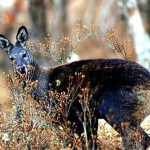 seen. A detailed musk deer study funded by the WWF was undertaken here between 1978 to 1980. Kaleej and monal pheasants are among the many birds seen. Best time to visit: late Apr. — Oct. Accommodation: 8 resthouses Permission: Kedarnath Sanctuary, Gopeshwar, Chamoli, UP Nearest town: Gopeshwar (2 miles/4 km) Rail: Rishikesh (133 miles/213 km) Air: Dehra Dun (143 miles/228 km)
seen. A detailed musk deer study funded by the WWF was undertaken here between 1978 to 1980. Kaleej and monal pheasants are among the many birds seen. Best time to visit: late Apr. — Oct. Accommodation: 8 resthouses Permission: Kedarnath Sanctuary, Gopeshwar, Chamoli, UP Nearest town: Gopeshwar (2 miles/4 km) Rail: Rishikesh (133 miles/213 km) Air: Dehra Dun (143 miles/228 km)
Kishanpur Sanctuary
Established in 1972 over 77 sq miles (200 sq km) of rerai forests and open meadows similar to Dudhwa to its east. Tiger, a few swamp deer. leopard, sambar and hog deer are seen. Best time to visit: Feb. — May Accommodation: 3 resthouses Permission: Wildlife /Warden, Kishanpur Sanctuary, Lakhimpur-Kheri, U P Nearest town & Rail: Mailani (2 miles/3 km) Air: Lucknow (140 miles/225 km)
Nanda Devi National Park
Established in 1980 to include a unique range of both slora and fauna over 243 sq miles (630 sq km) in the vicinity of Nanda Devi Peak (25,675 feet/ 7816 meters), India’s second-highest mountain. The natural sanctuary was 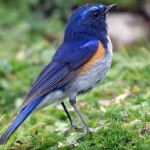 first entered in 1934 by the remarkable British mountaineers, Eric Shipton and Bill Tilman. Apart from Tilman’s successful attempt on Nanda Devi in 1936, the area remained virtually undisturbed until the 1950s, when a spate of climbing and trekking expeditions into the area began. Since 1980, access to the area has been restricted and climbing expeditions must first get permission from the Indian Mountaineering Federation (Benito Juarez Barg, New Delhi). When Shipton first entered the sanctuary he gazed on herds of bharal and goral—the numbers are now reduced but they can still be seen. Other animals seen include musk deer, serow and, possibly, snow leopard. The area is a proposed biosphere reserve. Best time to visit: Apr. — Oct. Accommodation: none Permission: DCF, Nanda Devi N.P., Joshimath, Dist: Chamoli, UP Nearest town: Joshimath (17 miles/23 km) Rail: Rishikesh (72 miles/276 km) Air: Debra Dun (185 miles/295 km)
first entered in 1934 by the remarkable British mountaineers, Eric Shipton and Bill Tilman. Apart from Tilman’s successful attempt on Nanda Devi in 1936, the area remained virtually undisturbed until the 1950s, when a spate of climbing and trekking expeditions into the area began. Since 1980, access to the area has been restricted and climbing expeditions must first get permission from the Indian Mountaineering Federation (Benito Juarez Barg, New Delhi). When Shipton first entered the sanctuary he gazed on herds of bharal and goral—the numbers are now reduced but they can still be seen. Other animals seen include musk deer, serow and, possibly, snow leopard. The area is a proposed biosphere reserve. Best time to visit: Apr. — Oct. Accommodation: none Permission: DCF, Nanda Devi N.P., Joshimath, Dist: Chamoli, UP Nearest town: Joshimath (17 miles/23 km) Rail: Rishikesh (72 miles/276 km) Air: Debra Dun (185 miles/295 km)
National Chambal Sanctuary
Established in 1979 and part of a large area coadministered by Rajasthan, BP and UP. Best time to visit: Nov. — Bar. Accommodation: 7 resthouses Permission: DFO, National Chambal Sanctuary, Project 13, Lajpatrai Barg, Lucknow. Nearest town & Rail: Etawah (11 miles) Air: Agra (44 miles/70 km)
Rajaji Sanctuary
Established in 1966, this small sanctuary on the edge of the Dehra Dun valley still has a few tiger and leopard in its 95 sq miles (246 sq km). Other animals seen include sloth bear, chital and sambar. Best time to visit: Oct. — June Accommodation: 4 resthouses Permission: Wildlife Warden, Dehra Dun, Uttar Pradesh Nearest town & Rail: Haridwar (7 miles) Air: Dehra Dun (20 miles/31 km)
Valley of Flowers National Park
Established in 1981 in one of the most remarkable areas in the Himalaya, this small park of 33.5 sq miles (87 sq km) is now a proposed biosphere reserve. Apart from the remarkable flora, there is an interesting range of birds and animals, including tahr, musk deer and leopard. F. W. Smyth’s book 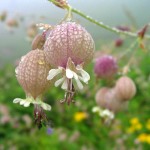 The Valley of Flowers, published in 1938, gives a dramatic description of the area’s discovery. Best time to visit: July & Aug. Accommodation: 2 resthouses Permission: DCF, Nanda Devi N.P., Joshimath Dist., Chamoli, UP Nearest town: Joshimath (20 miles/33 km) Rail: Rishikesh (181 miles/290 km) Air: Debra Dun (196 miles/313 km) Other sanctuaries in UP include Chandra Prabha (Varanasi dist.), where lions were unsuccessfully reintroduced in the late 1950s; Bahavir Swami (Lalitpur dist.); Botichur (Debra Dun dist.); Nawabganj Sanctuary (Unnao dist.); and Ranipur (Banda dist.). For further information, contact the Chief Wildlife Warden, 17 Rana Pratap Barg , Lucknow (Tel: 46140; Cable: Wildlife, Lucknow). Tourist information can also be obtained from the UP Government Tourist Office, Chandralok, 36 Janpath, New Delhi 110 001 (Tel: 3222-251).
The Valley of Flowers, published in 1938, gives a dramatic description of the area’s discovery. Best time to visit: July & Aug. Accommodation: 2 resthouses Permission: DCF, Nanda Devi N.P., Joshimath Dist., Chamoli, UP Nearest town: Joshimath (20 miles/33 km) Rail: Rishikesh (181 miles/290 km) Air: Debra Dun (196 miles/313 km) Other sanctuaries in UP include Chandra Prabha (Varanasi dist.), where lions were unsuccessfully reintroduced in the late 1950s; Bahavir Swami (Lalitpur dist.); Botichur (Debra Dun dist.); Nawabganj Sanctuary (Unnao dist.); and Ranipur (Banda dist.). For further information, contact the Chief Wildlife Warden, 17 Rana Pratap Barg , Lucknow (Tel: 46140; Cable: Wildlife, Lucknow). Tourist information can also be obtained from the UP Government Tourist Office, Chandralok, 36 Janpath, New Delhi 110 001 (Tel: 3222-251).

